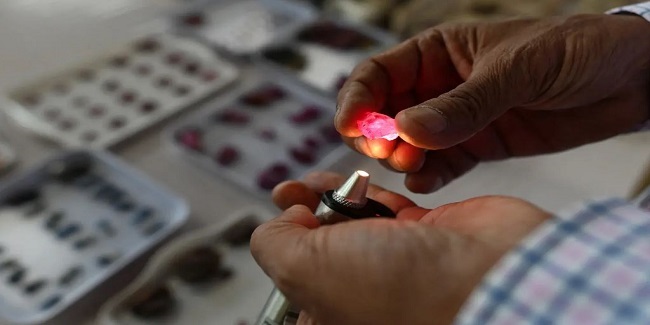Dozens of discarded bags float on the canals that run through Minh Khai town, whose narrow streets are littered with large amounts of plastic waste that has escaped from local farms and piled up in ovens where unused waste is recycled.
This plastic recycling “artisan village,” an hour from the Vietnamese capital Hanoi, is where some of the plastic destined for recycling in Japan, America and Europe is sorted. Delegates at a UN meeting in South Korea this week are discussing new global rules that could curb the trade, which was worth $3.8 billion last year, according to UN data. Stronger international requirements for waste imports will also be in place in Vietnam from next year. Southeast Asian countries have become major importers of plastic waste in recent years after China, once the industry’s largest, banned imports in 2018. Vietnam is expected to be the world’s fourth-largest exporter by 2022, according to the Organization for Economic Cooperation and Development (OECD). But the surge in imports comes as the country struggles to recycle its own plastic waste.
Other restrictions could slow trade, but large non-national companies could make it difficult to keep up with trade rules and recycling rates, experts and officials said. From processing to landfill
More than a quarter of Vietnam’s plastic recycling capacity is concentrated in artisanal communities like Minh Khai, the World Bank said in a 2021 report, noting that the capacity for recycled plastic imports stood at 300,000 metric tons.
This is down from the 420,000 tons of plastic waste Vietnam imported last year, representing an 11% increase from 2022, according to UN data, which does not account for the total volume. Vietnam’s environment ministry did not respond to a request for updated figures.
Researchers have found that plastic waste is not properly managed, both in the ocean and in Vietnam, hindering recycling. According to a report supported by the government WWF, only 30% of the plastic waste produced in Vietnam will be processed in 2023.
As a result, despite shipping costs, Vietnamese recyclers rely on high-quality foreign plastic waste, according to FiinGroup, a research firm. But estimates suggest that Vietnam recycles only about a third of its imported plastic waste, according to a study published in January.
This is partly because imported plastics are often mixed with municipal waste, making them difficult or impossible to process, said one of the study’s authors, Kaustubh Thapa, of China University of Utrecht in the Netherlands. A recycler from Minh Khai town is more optimistic. Chi, who declined to give his full name, said, “The amount of waste that is imported that cannot be recycled is usually about 5 percent of the volume, but sometimes it reaches 25 percent.” Most of the villagers contacted in person or by phone declined to speak to the media for fear of repercussions for their actions.
Much of the plastic that is not recycled is dumped in “unsanitary” landfills, with about 15% of the amount released directly into the environment and the ocean, according to a WWF report. “Transporting waste for recycling to locations that do not have strong recycling capacity raises questions about equity and sustainability,” concluded the research report written by Thapa and his team.



